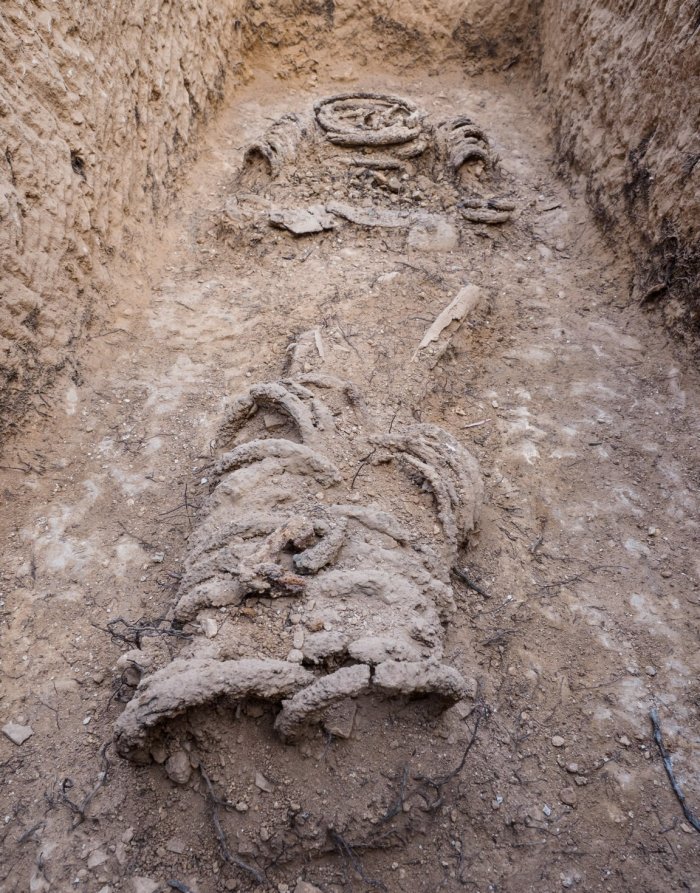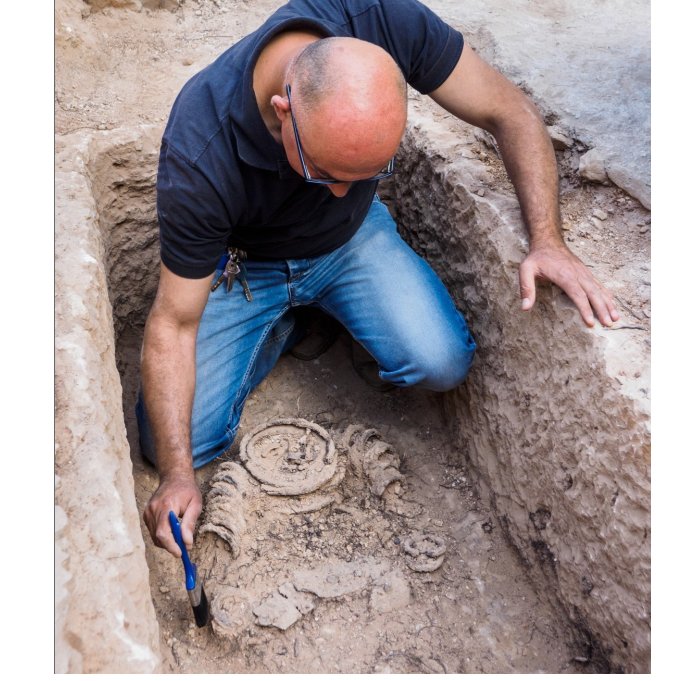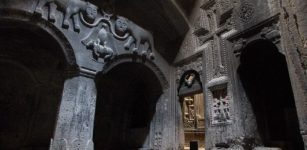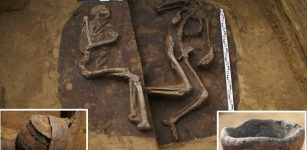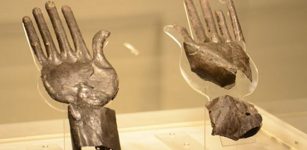Skeletal Remains Of A 1,500-Year-Old Byzantine Ascetic Monk, Chained In Iron Rings – Uncovered Near Jerusalem
Conny Waters - AncientPages.com - The skeleton of a 1500-year-old Byzantine monk, chained in iron rings, was uncovered in a recent excavation near Jerusalem in 2017. No doubt, he wanted to achieve a very special goal and he indeed did it. However, he was not the only one.
This most extreme practice was widely known and well-documented.
Photo: Assaf Peretz, Israel Antiquities Authority.
A skeleton chained with iron rings was found at Khirbat el-Masani, about four kilometers northwest of Jerusalem, along the old road leading from Lod to Jerusalem via Nebi Samuel/Nabi Samwil.
A fascinating phenomenon discovered in excavations in Jerusalem is that of human skeletons interred wrapped in heavy iron chains weighing tens of kilograms, report archaeologists from Israel Antiquities Authority.
The archaeological remains of a Byzantine-period church with three-apses uncovered here were probably part of a monastery with a road inn for pilgrims. It has been proposed to identify the church with the Church of Saint Zachary, built by the priest Sabinus.
In the past, the site was surveyed in the Jerusalem Survey Map, and a small excavation was conducted by the Israel Antiquities Authority archaeologist Dr. Gaby Mazor, exposing the front part of two of the apses.
An extensive excavation carried out at the site in 2017, directed by Israel Antiquities Authority archaeologists Zubair Adoi and Kafir Arbiv and funded by Moriah Jerusalem Development Corporation, uncovered a large architectural complex, comprising the monastery and road-inn and, most prominently, the church, enabling an understanding of the plan, construction methods and the date of the church.
Photo: Assaf Peretz, Israel Antiquities Authority
The human skeleton, chained with iron rings around his neck, hands, and feet, was discovered in a cist grave next to two small niche-like closed cells in the central apse of the church. The interred was probably an ascetic monk living in or near the church compound, who bore the chains as part of his devotion.
Whilst the discovery of a chain-clad skeleton is extremely rare in the region, a similar find was uncovered made by Israel Antiquities Authority archaeologist Elena Kogan-Zehavi in 1991 at Khirbat Tabaliya (Givat Ha-Matos), located between Jerusalem and Bethlehem. The monks built an underground complex on the hill, used especially for seclusion of hermits.
During the archaeological excavations held on this hill, researchers unearthed a body of a hermit in one of the cells, wearing a heavy chain.
The complex was later converted to a round tower that was built over it.
Ascetic monks chose to practice self-deprivation by living in seclusion and wrapping themselves in chains inside closed cells.
This form of asceticism originated in Syria in the fourth or fifth century CE and is well-documented in historical sources.
There is evidence of extreme asceticism in Christianity that appeared in second century texts and later, in both Eastern Orthodox Christian and Western Christian traditions. This extreme asceticism was the practice of chaining the body to rocks, eating only grass, praying seated on a pillar in the elements for decades. One of such individuals was the monk Simeon Stylites (c. 390 – 2 September 459), who chose solitary confinement inside a cell.
He abandoned personal hygiene and adopted lifestyle of a beast, self-inflicted pain and voluntary suffering.
With regard to the ascetic interred chain-clad monks, the archaeological evidence demonstrates that this practice spread at least as far south as the Jerusalem region.
The discovery of the interred chain-clad monks raises questions on human psychology, Israel Antiquities Authority's reseachers say.
How and why did these monks willingly endure the weight of the heavy chains for so many years?
What motivated them to undertake such an extreme act?
Written by Conny Waters - AncientPages.com Staff Writer

